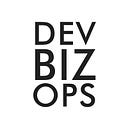Moonshots and Diversity
I want to talk about moonshots. Actually, one moonshot in particular. On July 20, 1969, Neil Armstrong and Buzz Aldrin became the first humans to land on the Moon. While many were responsible for this historic feat, one software engineer in particular made that day a success.
Margaret Hamilton of the MIT Instrumentation Laboratory was assigned to lead the development of the guidance and navigation systems for the Apollo missions. It was her work on these critical software components that ensured the lander made contact with the surface safely when a potential error nearly scuttled the landing.
In the early 60’s, software was still very new. There was not even a term for “software engineering”. She coined the term and developed the rigorous disciplines and testing required to ensure the software that was guiding the spacecraft worked without fail. Her ideas and the software she helped create now powers the fly-by-wire systems on every commercial jet.
“When I first got into it, nobody knew what it was that we were doing. It was like the Wild West.”
Margaret Hamilton
Organizations talk about seeking their own moonshots and building great teams to innovate. Yet they regularly limit the pool of people that can contribute groundbreaking ideas. It starts with how they hire and onboard. Then companies manage to limit the growth and career advancement of their very best and most capable employees.
Of course, I am talking about women developers. The most optimistic stats state that women constitute about 25% of the pool of professional software engineers. While it is encouraging that more women are entering computer science programs, women are also stuck in more junior roles and outright leaving the field altogether at higher rates than men.
The technology field is only getting more complex. Software is becoming ever more pervasive and ingrained in every moment of our lives. If we limit our code to the thinking and experiences of one gender, we limit the creativity required to solve the challenges we face as a species:
“You only visualize solutions based on your prior experience. When you expand the pool of problem solvers to include people with a different set of experiences, you accelerate the cross-pollination of ideas.”
Many say the lack of women coders is a pipeline issue. I reject that notion however, especially with the growing number of women that have entered the field in recent years. The issue is visibility and providing a motivating and welcoming environment in an industry that cuts down women through thousands of mini-slights and humiliations.
If you also feel that visibility is a core issue in holding back progress on greater diversity, here are a few ideas that might invigorate your diversity efforts:
- Promote women oriented / friendly hackathons. On this point, I must applaud DBS Bank and their Hack2Hire-Her initiative as a very creative way to draw in women coders.
- Organize talks in your company and invite women developers and engineering leaders outside the organization to speak to your teams.
- Offer fully sponsored opportunities for your women developers and engineering leaders to speak publicly at events and share their work openly.
- Recognize and reward the accomplishments of women developers across the company on a regular and ongoing basis.
- Eliminate the gender pay gap between women and men engineers. There is nothing more demotivating than knowing you are paid less for the same work and results.
- Reduce unconscious bias. Examine the language used in job posts, the ways you interview candidates, the procedures for promotion, and how you encourage more women participation in meetings and decision making.
- Invite men to be involved. When they are onboard fully with the vision for diversity, they can be powerful advocates and enablers for change.
It is tough for women coders to be enthusiastic when constantly questioned about their skills whereas male colleagues are rarely quizzed. If we could remove the barriers in understanding and create more welcoming organizations, just think of the potential we can unleash. For her part, Margaret never felt alienated or belittled. At the lab, she says, “I was one of the guys.”
How are you tackling the diversity challenges at your company? Would you say that your company is welcoming and supportive to women developers?
Why is diversity in the workplace important?
Some frank discussion here and some useful ideas being shared…
We help IT leaders in enterprises solve the cultural challenges involved in digital transformation and move towards a community based culture that delivers innovation and customer value faster. Learn more about our work here.
